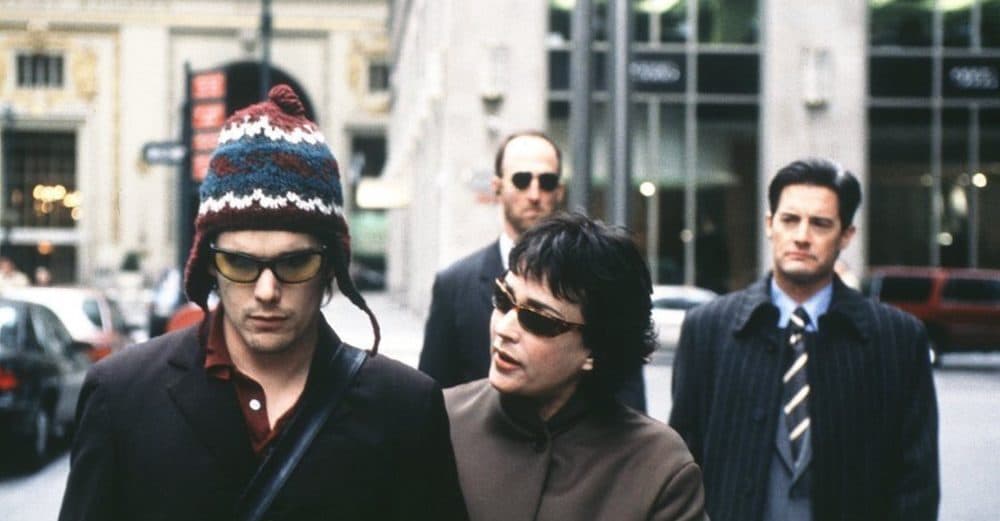Advertisement
Quarantine Double Feature
Quarantine Double Feature: The Fun[damentals] Of Shakespeare

Quarantine Double Feature is a series in which we pick two films available for streaming and discussion while we wait out this crisis at home. This week: The Fun[damentals] of Shakespeare.
A big educational breakthrough for me — and I am sure I’m not alone here — was when I discovered that the stark, blood-soaked tragedy of “Macbeth” also contained a monologue about being too drunk to maintain an erection. Dirty jokes have a way of knocking down doors for young students, and for this particular class clown, the Porter’s speech about alcohol provoking desire while taking away performance was key to my early understanding that the plays of William Shakespeare were never meant to be musty objects of study, but rather were written as broad, bawdy entertainments for mass audiences. It looks like we’re all going to be home-schooling for the foreseeable future, so it’s fine a time as any to be reminded that this Shakespeare stuff is supposed to be fun.
It also can be plenty intimidating, and sometimes requires a little homework before you can wrap your head around it all. That’s the point of Al Pacino’s wonderful 1996 documentary “Looking for Richard,” which finds the actor and his pals hanging around on weekends trying to put together their own informal production of Shakespeare’s “Richard III,” wrestling with the text and its interpretations in an accessible, enormously entertaining fashion. Then once you’ve got the words down, you can start getting weird with them, like director Michael Almereyda did with his brazenly irreverent 2000 adaptation of “Hamlet” set in modern-day Manhattan, where something’s rotten in the Denmark Corporation.
A loosey-goosey attempt to tear down the psychological barriers between contemporary audiences and The Bard of Avon, Pacino’s documentary is the most delightful educational film you'll ever see. “What is it that gets between us and Shakespeare?” he wonders aloud, wandering the streets of New York City asking random passersby and later recruiting legends of the British theater to offer their own analyses of Americans' inferiority complex when it comes to iambic pentameter. The movie opens with a fantasy sequence in which the actor takes an empty stage and meets the disapproving gaze of a single audience member, Shakespeare himself. Pacino blurts out a word beginning with the letter “f” — it’s not folio — and the opening credits roll.

With the assistance of his endearingly excitable playwright pal Frederic Kimball, Pacino pulls together a cast of close friends and begins workshopping the play. We join Alec Baldwin, Kevin Spacey, Winona Ryder and Estelle Parsons, among others, as they break down the scenes and dig into their characters' motivations. The film nimbly cuts between costumed performances and street-clothes rehearsals, with Pacino’s Richard III just as likely to be wearing a prop crown as a backward “Scent of a Woman” baseball cap. (Shot over several years, the footage is time-stamped by the tonsorial choices of whatever characters Pacino was playing in other films at the time. In my favorite scenes, he’s got his iconic “Carlito’s Way” beard, so the Duke of Gloucester looks like a Puerto Rican gangster.)
What a joy this movie is to watch — such a treat to see these talents finding their way into the tricky material. The dense thickets of language become easier for us to navigate as the cast members grow more comfortable in their roles, the picture pausing sometimes to provide important historical context or just general silliness. Better than any other movie I can think of, “Looking for Richard” conveys the sheer pleasure of learning, along with a performer’s satisfaction in bringing these beautiful words to life.
Advertisement
One of the things that makes Al Pacino my favorite actor is that he’s never lost his sense of play — that impish, antsy unpredictability he brings to every role, whether the movie calls for it or not. When he made this documentary, Pacino had already portrayed Richard III three times on stage, yet in every rehearsal here he seems to be beginning anew, always in the process of exploration and discovery, perfectly ready to look ridiculous if need be. That restless, searching energy drives the film, and its director. This kind of homework is an awful lot of fun.
Presumably thanks to the success of Baz Lurhmann’s migraine-inducing 1996 “Romeo + Juliet” — a film in which most of the actors not named Leonardo DiCaprio appear to have learned their lines phonetically — the turn of the century brought a bumper crop of modern-day Shakespeare adaptations. For some reason, most of these movies seemed to star Julia Stiles, who played the high school shrew tamed by Heath Ledger in 1999’s “Ten Things I Hate About You” and a doomed Desdemona in director Tim Blake Nelson’s long-delayed, controversial “O.” She also co-starred as an ADD-addled Ophelia in Almereyda’s “Hamlet,” the most prankish and elegant update of the bunch.

Twenty years ago, the film felt a little bit too cheeky for its own good, with Ethan Hawke playing the melancholy Dane as a pouty film student in a hipster stocking cap, moping around the Hotel Elsinore after his Uncle Claudius (Kyle MacLachlan) married his mom and became the new CEO of the Denmark Corporation. It’s by far the wittiest of this era’s Shakespeare modernizations, with Hawke famously delivering the “To be or not to be” soliloquy in the “Action” aisle of a Blockbuster Video, and “get thee to a nunnery” taking the form of increasingly incensed messages left on Ophelia’s answering machine before she drowns herself at the Guggenheim.
“The Mousetrap” becomes Hamlet’s student film, and the gravedigger scene is puzzlingly elided in favor of Jeffrey Wright singing a few bars of “All Along the Watchtower.” Like most Almereyda movies, it’s seemingly designed to divide audiences, yet the one thing we could all agree on at the time is that Bill Murray’s Polonius was a sublime stroke of casting. He brings out not just the inherent comedy but also a decency and pathos I’d never felt before in various incarnations of this character, a depth of feeling I thought the film otherwise had a hard time maintaining among all its shiny, clever modernizations.
But time does funny things to movies, and the obsolescence of just about every technological update Almereyda included in “Hamlet” provides the film with a tremendous undercurrent of sadness it couldn’t have had back in 2000, one far more in keeping with the play’s somber sensibility and its themes of ephemerality and mortality. Turns out the movie didn’t need a Yorick because it was already full of them — video stores, landlines, fax machines — where be your gibes now? Watching it again last week, “Hamlet” moved me so much more than it did 20 years ago because now all of Almeryeda’s affections feel like they’re of a piece with the material, and the tale is timeless once again.
“Looking for Richard” is available to rent on most video on demand outlets. “Hamlet” is streaming on Hoopla and available to rent on most video on demand outlets.
